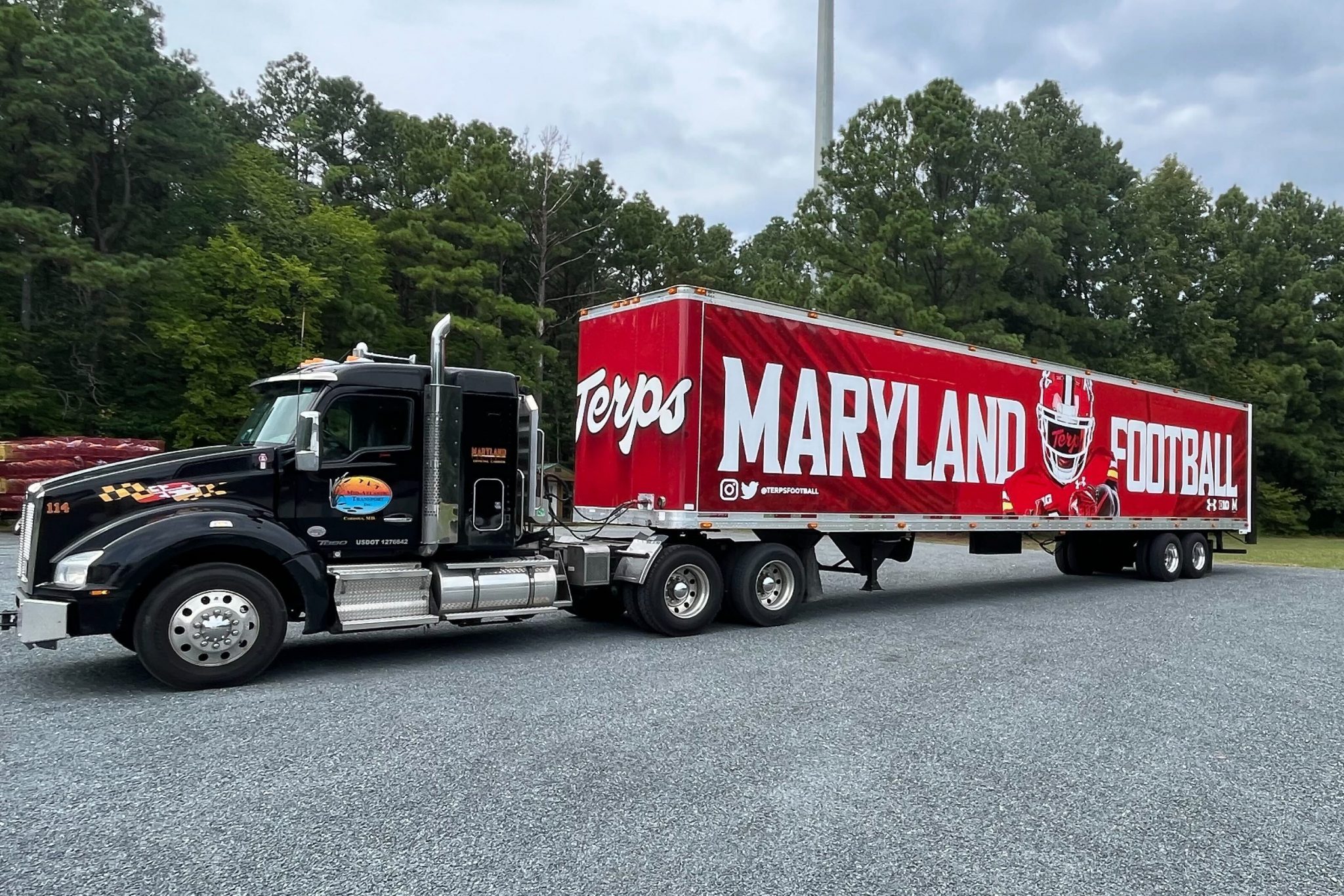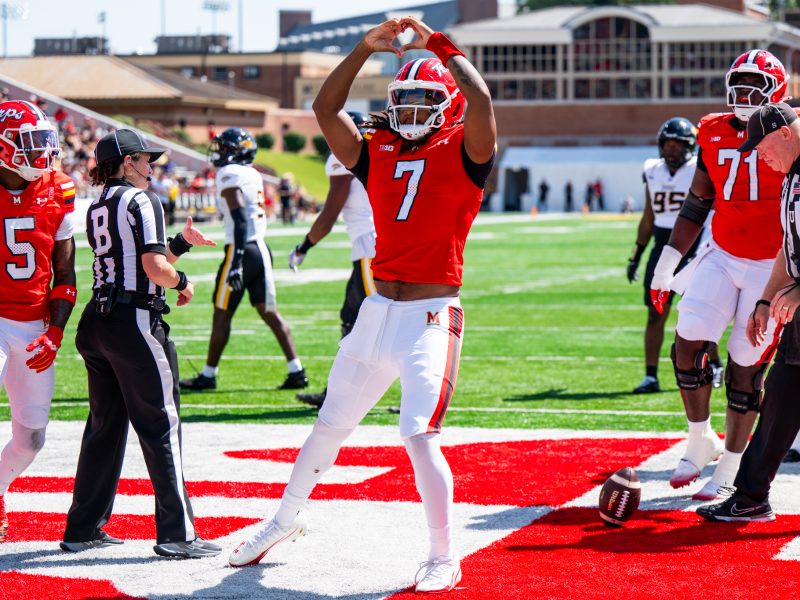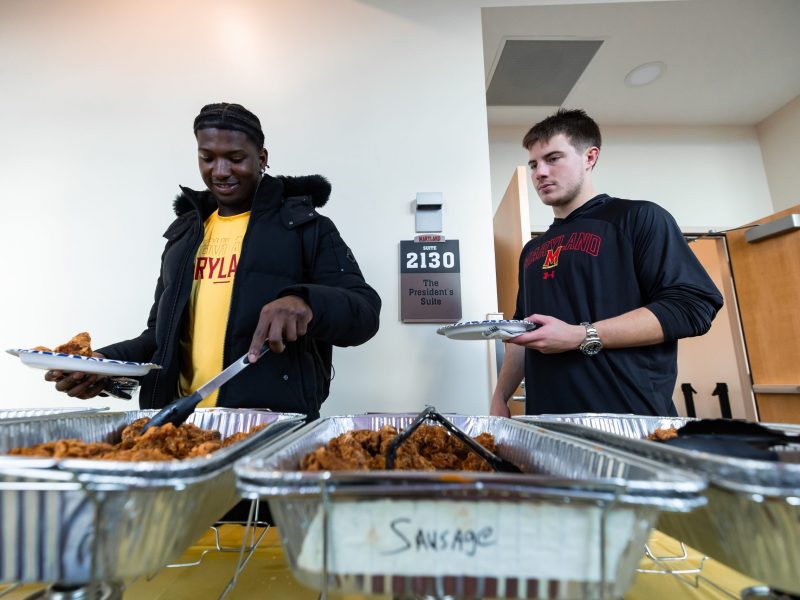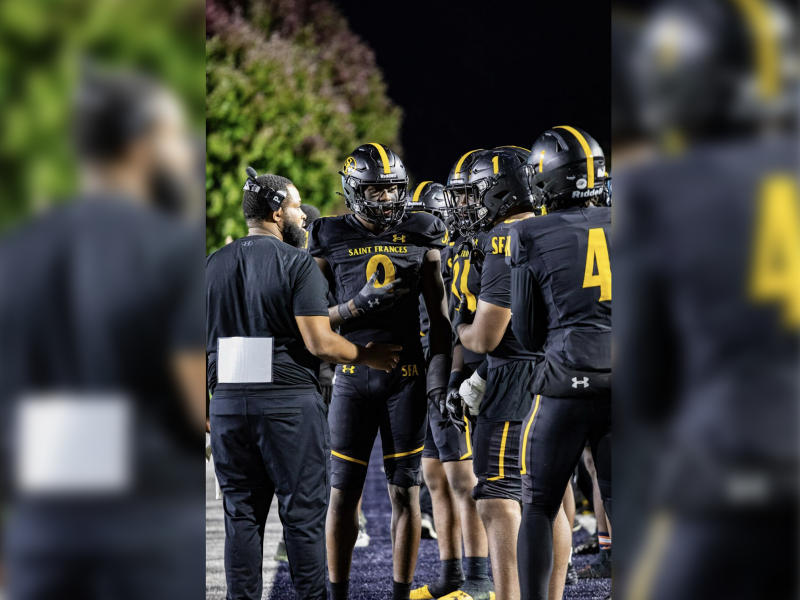If they do their job right, you will probably never know who they are. The job of a college football operations team is grueling, filled with travel and abnormal working hours. But they’re the hidden ingredient that keeps a program running smoothly.
Maryland’s game on Saturday at No. 1 Oregon will put more than 225 people to the test this week. According to an analysis by The Diamondback, the trip is more than 2,300 miles away, the fourth-furthest distance a Big Ten team will travel this season — drastically accelerating the Terps’ weekly routine.
The Big Ten’s recent expansion has heightened how important the behind-the-scenes operation groups are to a program’s success. Teams are set to travel more than 72,000 miles combined this season for conference games, according to The Diamondback’s analysis.
Maryland will travel about 3,964 miles for Big Ten games this season, a more than 1,300-mile increase from 2,662 miles last year despite one fewer road conference game. The Terps are scheduled to travel 4,287 miles next season, more than double the mileage it embarked on in 2022.
The Big Ten’s coast-to-coast conference games have garnered mixed opinions. Coach Michael Locksley said he loves the added element of playing in a different region, while some fans are disappointed in the added airfare and unusual nature of certain matchups.
[Sluggish starts have become a pattern for Maryland football]
“It’s obviously new to us,” Locksley said. “With anything, you try to rehearse, you do the research, you try to figure out the best way to have your team prepared.”
While some players say the increased travel shouldn’t significantly alter their routine, the program’s operation staff has prepared for weeks ahead of Saturday’s contest. Locksley said he began to hear about the travel plans for Eugene, Oregon, weeks ago, something he wasn’t prepared for.
Football operations director Annie Peppard and senior director of football operations Drew Hampton lead scheduling. A Terps-decked truck filled with equipment crossed the country early this week, reaching Oregon on Wednesday. The drive from College Park to Eugene takes about a day and 18 hours.
The team left for Oregon on Thursday, a day earlier than usual, arriving just after 2 p.m. EST. Players and coaches don’t travel alone — academic counselors, nutritionists, video staffers and sports medicine assistants all fly with.
“They’ve spent a lot of time, a lot of money, into this trip giving ourselves the best chance of traveling, when to travel, how to make sure our bodies get adjusted in the right time [zone] to give ourselves the best chance,” junior quarterback Billy Edwards Jr. said.
[Inexperience, inconsistency plague Maryland football]
The process is a multifaceted effort to make sure everything goes to plan. Academic counselors will help players with classes on Thursday and Friday, while nutrition staff will ensure the Terps are properly fed. Locksley said most players’ families will be in Eugene on Saturday, something the team appreciates.
“I feel like it helps kids on the East Coast actually get to the West Coast because you never know if they’re ever going to get out there,” said Dante Trader Sr., Dante Trader Jr.’s father “I want to go to Oregon because I want to go to the Nike factory.”
The operation will culminate on Saturday when the Terps face the Ducks. Fans see the three-hour game time window, but the preceding process is arguably just as critical.
When the clock hits zero, the equipment staff take just an hour to pack all of Maryland’s equipment and start heading home. Then, it’s on to the next week.
Data editor Mario Morais and data reporter Theodore Rose contributed to this report.



